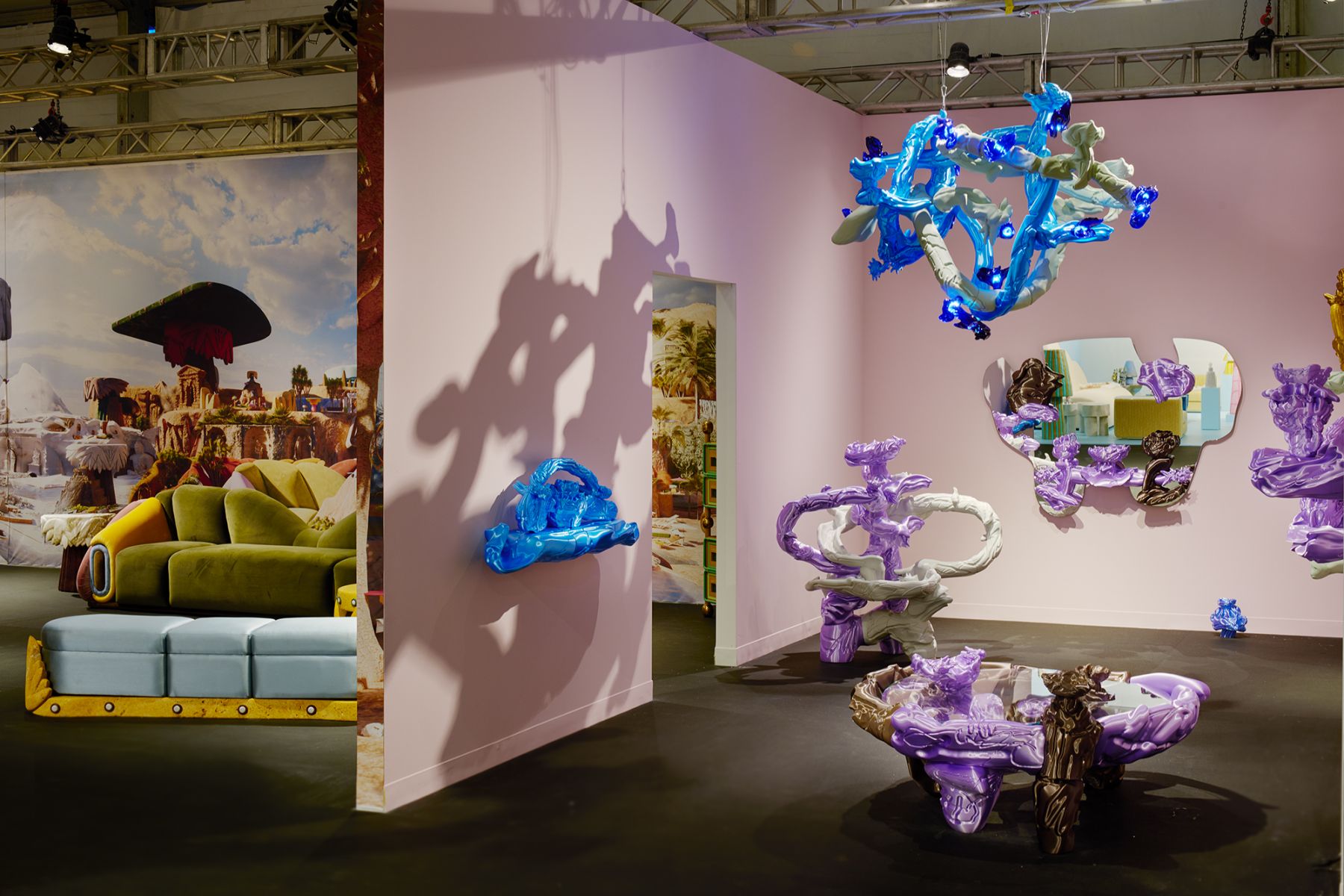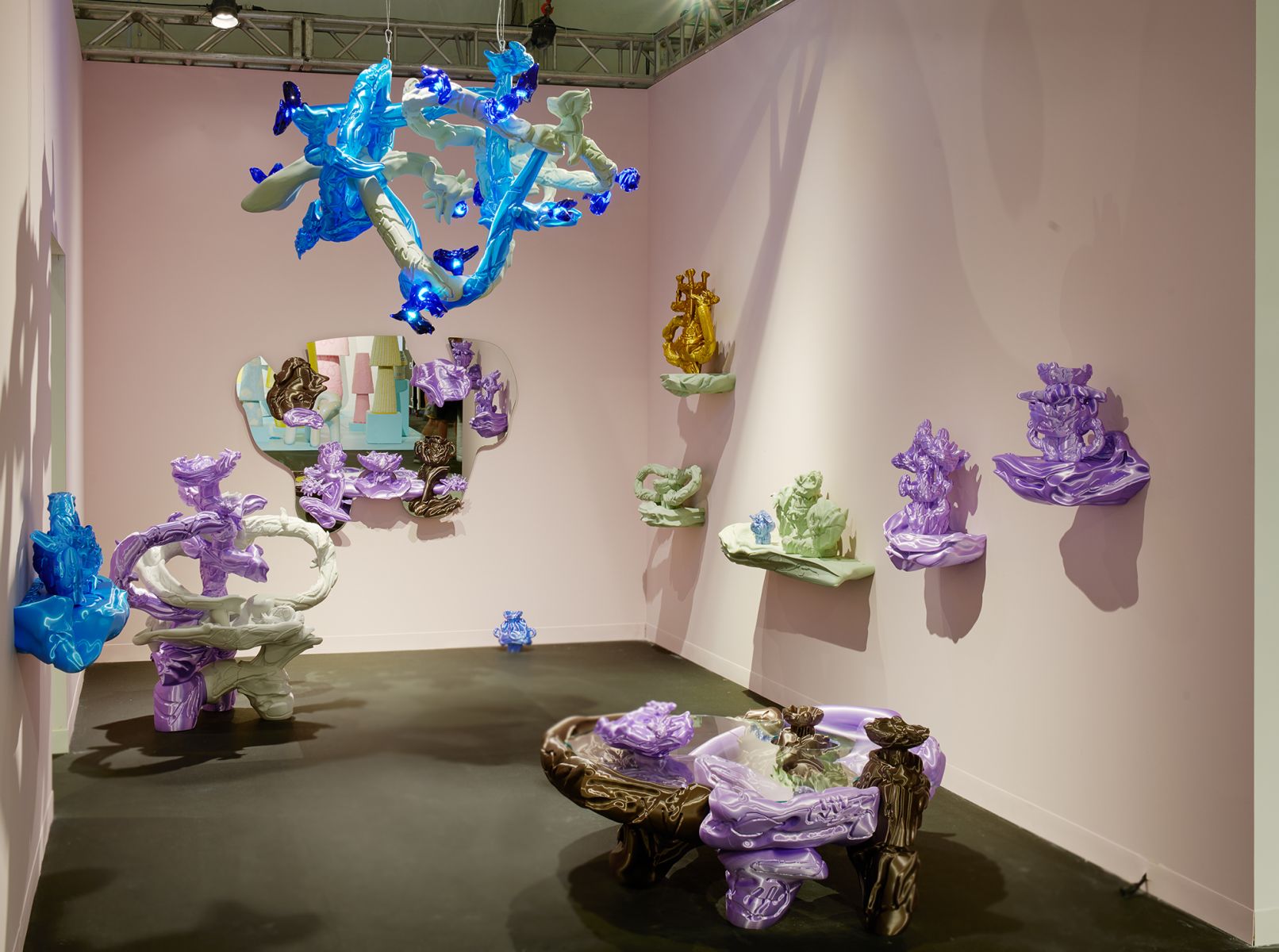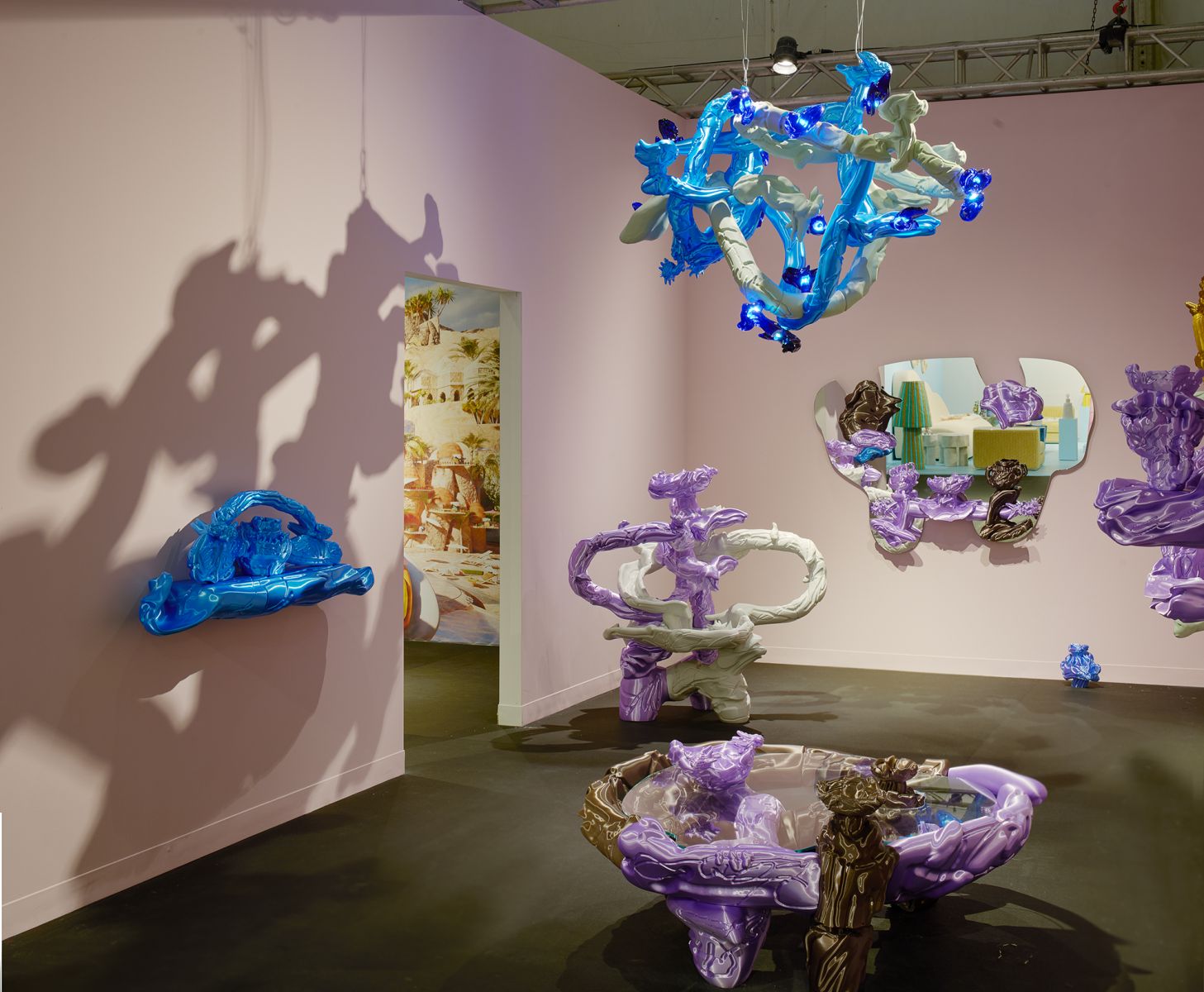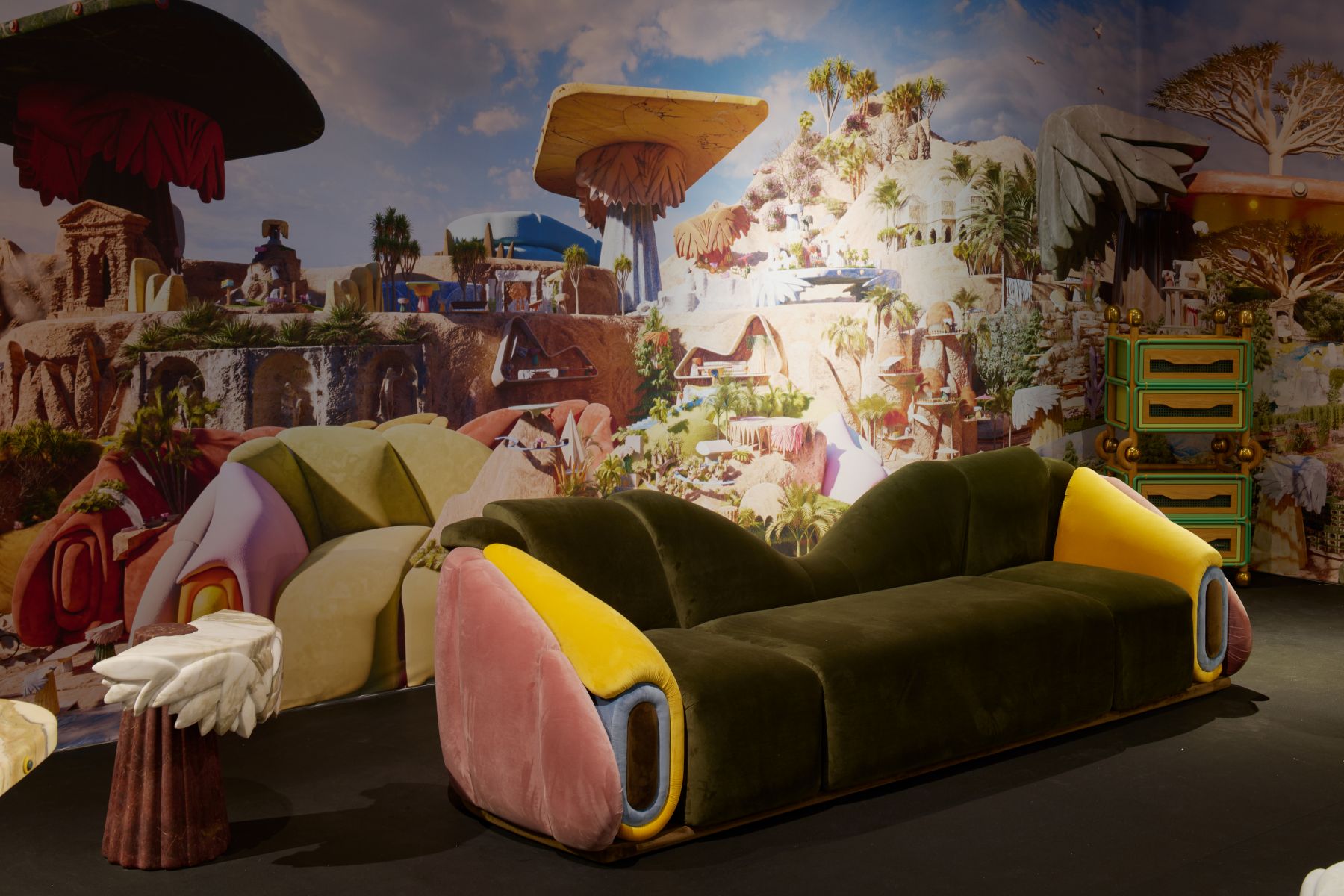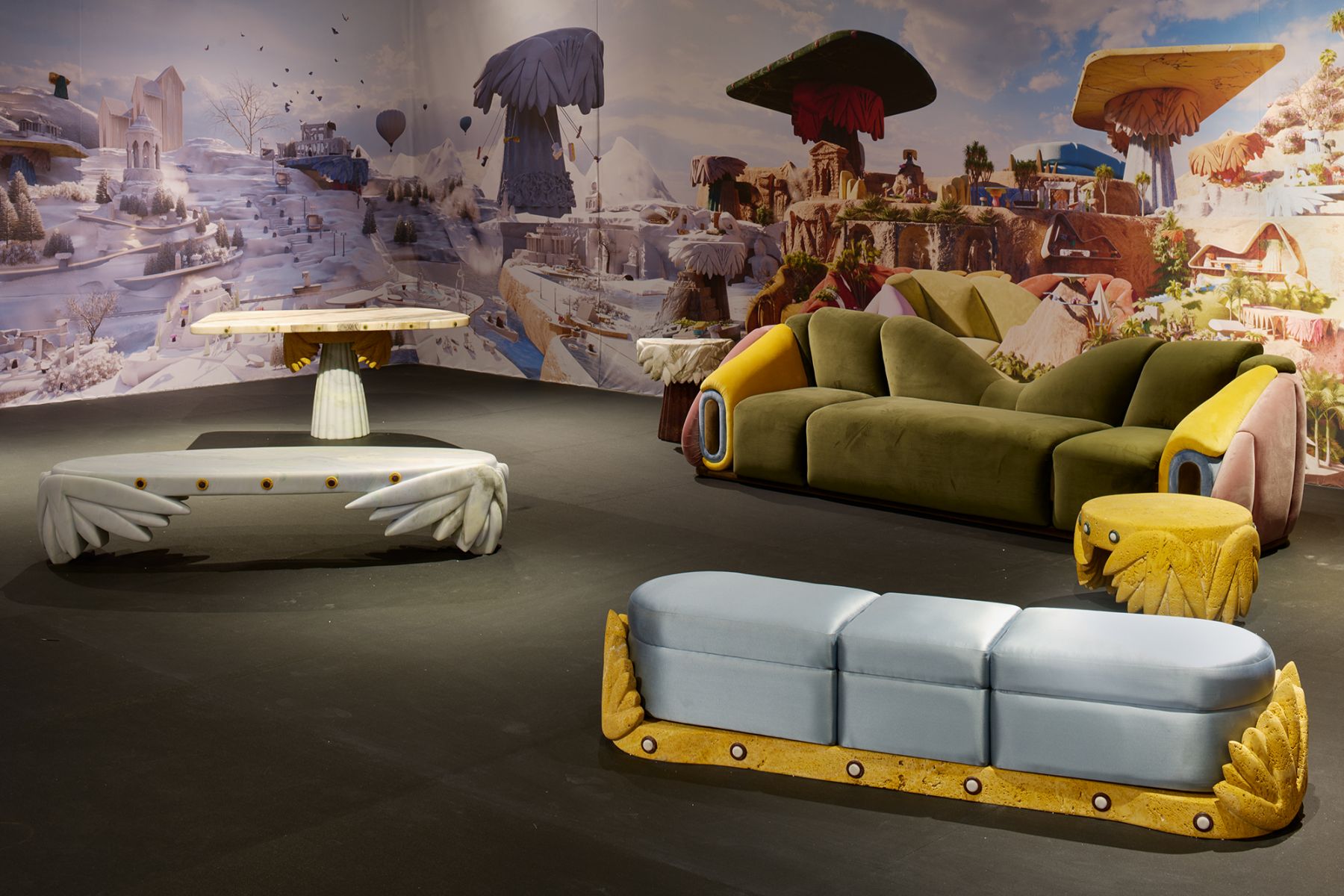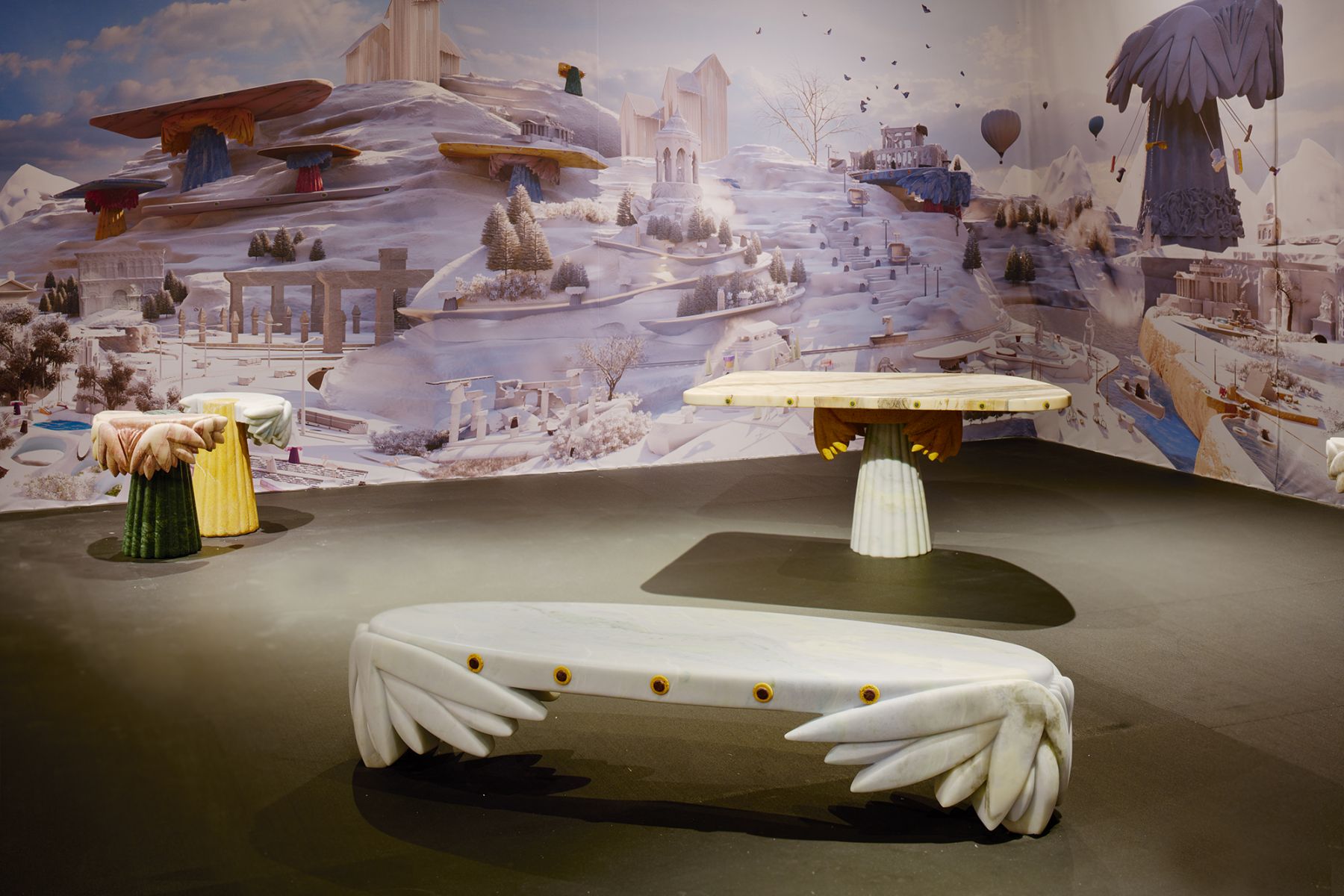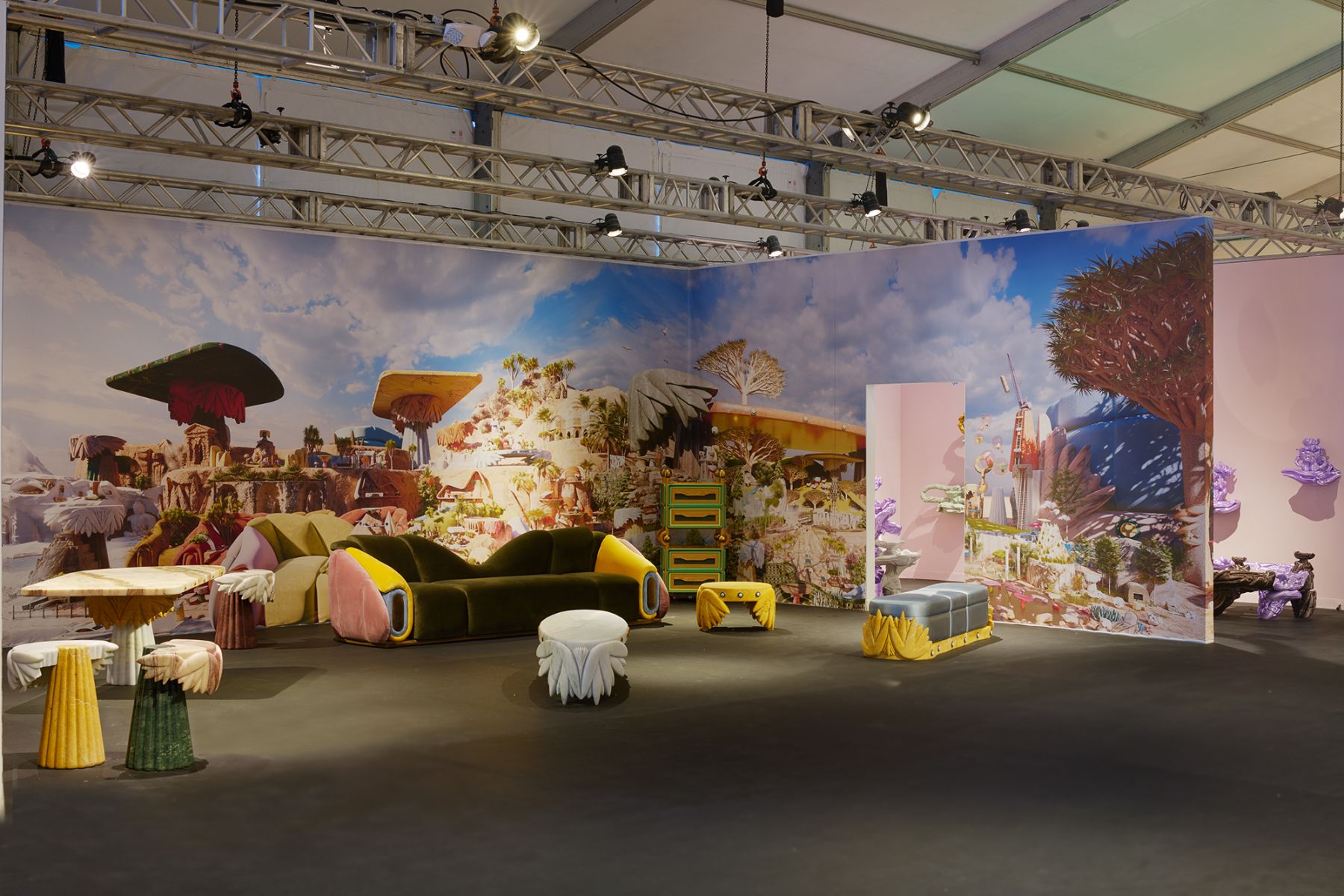Design Miami
From November 30th to December 4th 2022
Nilufar Gallery returns to Design Miami/ with a showcase of new works by contemporary international designers Audrey Large and Khaled El Mays. After several years of absence, the founder of the gallery, Nina Yashar, brings to the US some of the most avant-garde visions of nowadays collectible design. “I am thrilled to be back in Miami; I have always looked at the US market’s pioneering role and vision with interest. This is why I am bringing to Design Miami/, undoubtedly one of the most compelling events in collectible design, two contemporary creative visions that I am very fond of and that reflect the energy of this city: Audrey Large works to define that liminal space between present and future, while Khaled El Mays is an exciting explosion of colours, shapes, materials” states Yashar.
AUDREY LARGE - Afterglow Audrey Large will present “Afterglow”, a series in continuation of her highly successful “Scale to Infinity” solo show that took place in 2021 at Nilufar Gallery, in Milan.
Straddling between art and design, Large’s practice explores the potential of digital image manipulation processes applied to the design of our physical surroundings. Far from the dream of simulation, Afterglow fully embraces the potential of digital as a sensitive tool leading towards new representational freedom. In the virgin expanse of a 3D modelling software, the objects are freely hand-drawn and intuitively crafted in three dimensions. The project thus explores the dialogue between form and technique, focusing on the translation of matter into different formats: still and moving 2D images, 3D objects, and the permeable zone of each intermediary. It delves into the potential of pushing digital fabrication further by creating impossible artefacts straight out of a computer, and then placing them back into our everyday settings by digital fabrication (through 3D printing), which are conceived as the open worlds of a hybridised physical video game.
Afterglow plays with ambiguity by intertwining fluid forms with surfaces whose iridescent reflections align with the conventions of the digital aesthetic. The three largest pieces of the series (a mirror, a coffee table and a chandelier) are designed around the idea of a dynamic intertwining of numerous shapes and colours. Large conceived each object as a singular world which vibrates outside of itself to touch the beholder. Boundaries and contours dissolve with the play of lights, thus rendering the objects almost alive, in movement, constantly changing and revealing themselves. Iridescent, almost unreal, the Afterglow pieces are recognizable daily objects whose archetypal function is placed in contrast with free forms, so as to create ambiguous artefacts that articulate the codes of a futuristic aesthetic, “cartoons and baroque tradition or otherworldly ancient potteries carved by aliens”. They stand in the middle and refuse to define themselves within any known category, commenting on object design standardisation. At the precise moment of iridescence, matter becomes a paradoxically evanescent and tangible space where different degrees of reality come together in a sensitive experience. “Then, it is not anymore about a binary perspective of what's real or what's not, but rather a kind of tactile perception of the pluralities of our knowledge that redefine objecthood and thus challenges our material ways of being in the digital age” comments Large.
KHALED EL MAYS - The Lotus Series Khaled El Mays presents The Lotus Series, an exploration into the flower’s multiform architectural expressions.
The idea for the series started approximately five years ago, when El Mays’ began carving wood and marble to return to the classical architectural orders and visuals. The aim was to investigate how one can create works influenced by those original shapes while remaining grounded in the present and projected into the future, instead of being a mere exercise of nostalgia.
The studio thus started testing many ideas, until El Mays’ attention was directed to the lotus flower and its precedence and abstraction in ancient Egypt’s architectural orders and murals. From then on, the project found a neater focus directed at reformulating the lotus in a way that deforms its shapes into what appears to be wings. The typologies that surfaced from the many studies on the matter featured a subtle mix between what is obvious in classical orders and what is slightly twisted to give a new life to the forms.
The Lotus Series presented in Miami showcases an array of several colourful marbles from around the world, featuring interesting textures reminiscent of a period in design where visuals were richer and more elaborate.
Nilufar Gallery returns to Design Miami/ with a showcase of new works by contemporary international designers Audrey Large and Khaled El Mays. After several years of absence, the founder of the gallery, Nina Yashar, brings to the US some of the most avant-garde visions of nowadays collectible design. “I am thrilled to be back in Miami; I have always looked at the US market’s pioneering role and vision with interest. This is why I am bringing to Design Miami/, undoubtedly one of the most compelling events in collectible design, two contemporary creative visions that I am very fond of and that reflect the energy of this city: Audrey Large works to define that liminal space between present and future, while Khaled El Mays is an exciting explosion of colours, shapes, materials” states Yashar.
AUDREY LARGE - Afterglow Audrey Large will present “Afterglow”, a series in continuation of her highly successful “Scale to Infinity” solo show that took place in 2021 at Nilufar Gallery, in Milan.
Straddling between art and design, Large’s practice explores the potential of digital image manipulation processes applied to the design of our physical surroundings. Far from the dream of simulation, Afterglow fully embraces the potential of digital as a sensitive tool leading towards new representational freedom. In the virgin expanse of a 3D modelling software, the objects are freely hand-drawn and intuitively crafted in three dimensions. The project thus explores the dialogue between form and technique, focusing on the translation of matter into different formats: still and moving 2D images, 3D objects, and the permeable zone of each intermediary. It delves into the potential of pushing digital fabrication further by creating impossible artefacts straight out of a computer, and then placing them back into our everyday settings by digital fabrication (through 3D printing), which are conceived as the open worlds of a hybridised physical video game.
Afterglow plays with ambiguity by intertwining fluid forms with surfaces whose iridescent reflections align with the conventions of the digital aesthetic. The three largest pieces of the series (a mirror, a coffee table and a chandelier) are designed around the idea of a dynamic intertwining of numerous shapes and colours. Large conceived each object as a singular world which vibrates outside of itself to touch the beholder. Boundaries and contours dissolve with the play of lights, thus rendering the objects almost alive, in movement, constantly changing and revealing themselves. Iridescent, almost unreal, the Afterglow pieces are recognizable daily objects whose archetypal function is placed in contrast with free forms, so as to create ambiguous artefacts that articulate the codes of a futuristic aesthetic, “cartoons and baroque tradition or otherworldly ancient potteries carved by aliens”. They stand in the middle and refuse to define themselves within any known category, commenting on object design standardisation. At the precise moment of iridescence, matter becomes a paradoxically evanescent and tangible space where different degrees of reality come together in a sensitive experience. “Then, it is not anymore about a binary perspective of what's real or what's not, but rather a kind of tactile perception of the pluralities of our knowledge that redefine objecthood and thus challenges our material ways of being in the digital age” comments Large.
KHALED EL MAYS - The Lotus Series Khaled El Mays presents The Lotus Series, an exploration into the flower’s multiform architectural expressions.
The idea for the series started approximately five years ago, when El Mays’ began carving wood and marble to return to the classical architectural orders and visuals. The aim was to investigate how one can create works influenced by those original shapes while remaining grounded in the present and projected into the future, instead of being a mere exercise of nostalgia.
The studio thus started testing many ideas, until El Mays’ attention was directed to the lotus flower and its precedence and abstraction in ancient Egypt’s architectural orders and murals. From then on, the project found a neater focus directed at reformulating the lotus in a way that deforms its shapes into what appears to be wings. The typologies that surfaced from the many studies on the matter featured a subtle mix between what is obvious in classical orders and what is slightly twisted to give a new life to the forms.
The Lotus Series presented in Miami showcases an array of several colourful marbles from around the world, featuring interesting textures reminiscent of a period in design where visuals were richer and more elaborate.
Picture

